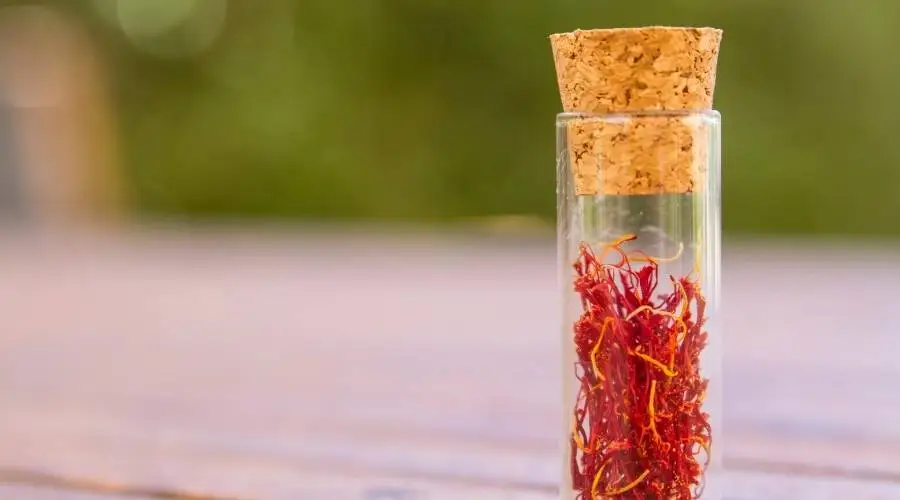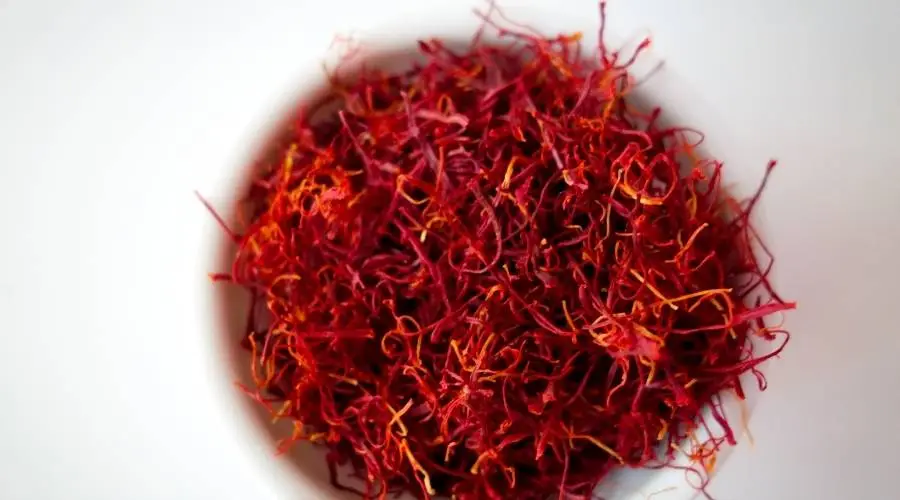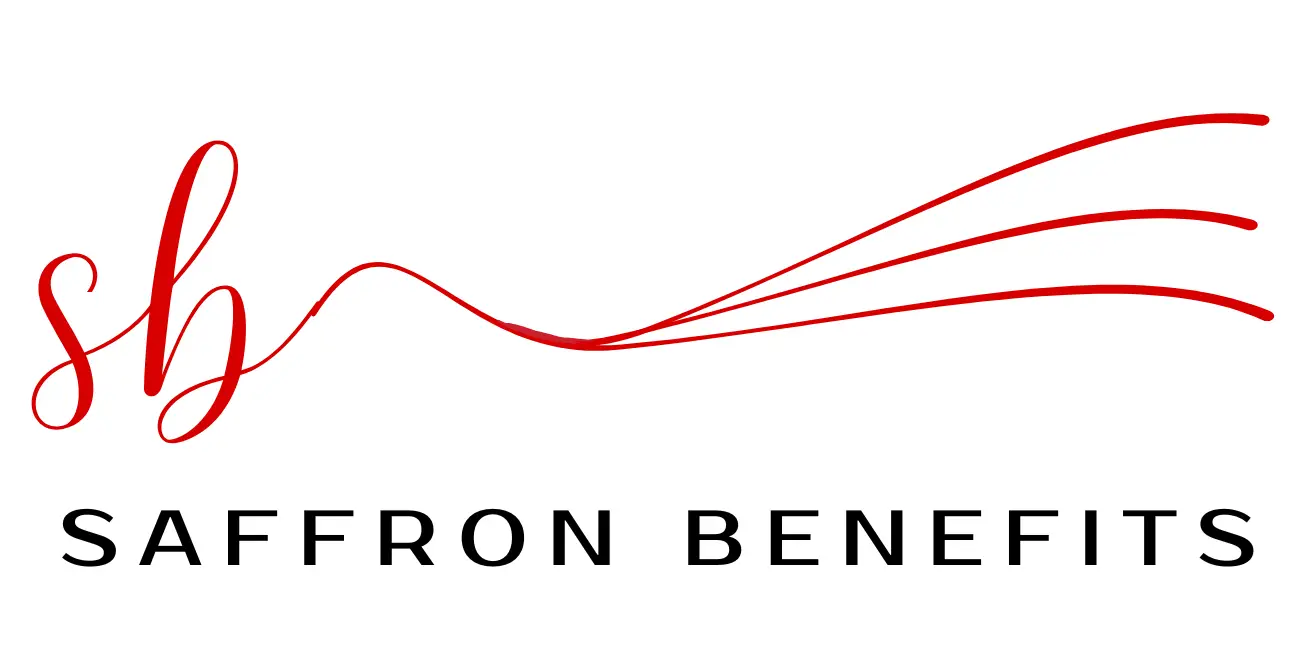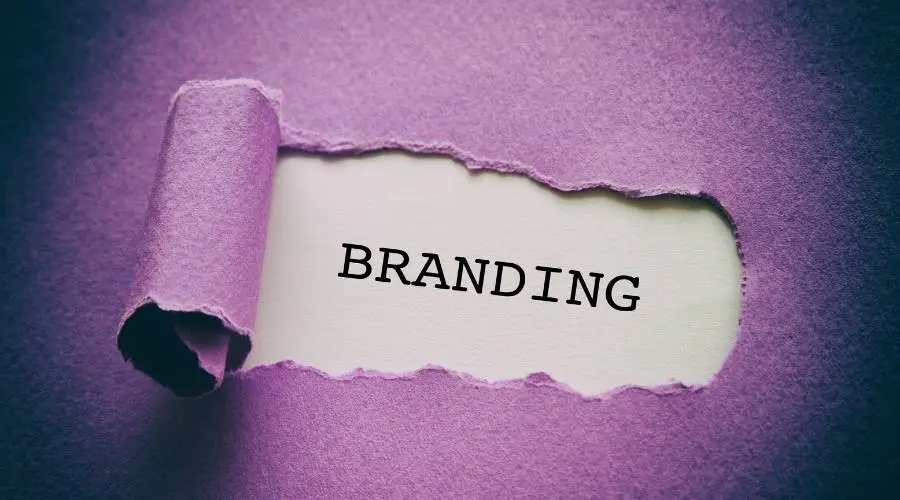📌 Quick Answer: The best saffron brands offer transparent sourcing from Iran, Kashmir, or Spain, ISO 3632 quality certifications, proper packaging to preserve freshness, and authentic characteristics like deep red threads, trumpet shapes, and honey-hay aroma. Premium brands balance quality with fair pricing.
Saffron is the most expensive spice in the world. Its rich golden color, fragrant aroma, and unique taste make it a favorite among chefs and food lovers. Understanding what saffron is helps appreciate why it’s widely used in Mediterranean, Persian, and Middle Eastern cooking to enhance dishes like paella, biryani, risotto alla Milanese, and baklava. Beyond culinary uses, saffron has a long history in traditional medicine for its antioxidant and mood-boosting benefits.
Both professional chefs and home cooks face an important question: Which saffron brands offer genuine quality, authentic sourcing, and good value? With numerous options available—some of questionable quality—finding genuine saffron becomes an intricate task requiring expertise and careful evaluation.
Chef’s Professional Tip: After years in commercial kitchens, I’ve learned that authentic saffron brands make the difference between ordinary and extraordinary dishes. Quality saffron transforms recipes, while poor substitutes disappoint both chef and customer.
Understanding Saffron Quality and Characteristics
Determining saffron quality requires a careful approach, using sensory evaluation techniques that only genuine threads can provide. Professional quality standards guide this assessment process.
1. Color: The Indicator of Crocin Concentration
Premium saffron captivates with its deep crimson color—intensity and uniformity signal high crocin concentration, the pigment responsible for its golden hue in culinary creations. Faded or yellowish strands often hint at age or adulteration.
2. Aroma: The Signature Fragrance of Authenticity
Authentic saffron’s aroma is unmistakable: a luxurious blend of hay-like earthiness, honeyed sweetness, and subtle metallic notes. This fragrance arises from safranal, the volatile oil released when threads are steeped or crushed. Genuine saffron should perfume a room with just a few strands.
3. Flavor: The Delicate Balance of Bitterness and Floral Notes
Discerning palates appreciate saffron’s unique flavor profile—delicate bitterness balanced with floral undertones, lingering elegantly on the tongue. When evaluating new brands, steep a few threads in warm water; the liquid should gradually turn rich golden yellow, never red or artificial orange.
Food Scientist’s Note: The bioactive compounds responsible for saffron’s characteristics—crocin, safranal, and picrocrocin—exist in specific ratios that determine quality. These compounds cannot be artificially replicated, making sensory evaluation crucial for authenticity verification.
4. Counterfeit Safeguards: Protecting Against Adulterated Products
Understanding how to spot fake saffron is crucial. Adulterated products may contain dyed corn silk, shredded paper, or synthetic colorants that lack both the aroma and complex taste of true saffron.
Always inspect for:
- Uniform thread structure with trumpet-shaped ends
- Deep red stigmas without yellow styles
- Strong, complex aroma upon opening
- Natural color variations within threads

International Saffron Grading and Classification
Professional saffron grading systems provide standardized quality metrics that reputable brands follow:
ISO 3632 International Standards
- Category I (Superior): Crocin >250, Picrocrocin >70, Safranal 20-50
- Category II (Good): Crocin 190-250, Picrocrocin 55-70, Safranal 20-50
- Category III (Standard): Crocin 150-190, Picrocrocin 40-55, Safranal 20-50
Spanish Grading Classifications
- Super Negin: Highest grade, all-red threads, no yellow parts
- Negin: Premium threads with minimal yellow content
- Pushal: Good quality with some yellow/white parts
These classifications help consumers understand quality levels and make informed purchasing decisions.
Factors Influencing Saffron Pricing
Understanding saffron price factors helps appreciate why this luxurious spice commands a high market value. Saffron cultivation costs drive pricing through several critical elements:
1. Labor-Intensive Harvesting Methods
Harvesting saffron requires delicate precision. Each Crocus sativus flower contains only three red stigmas, handpicked at dawn when fully open. This meticulous process demands significant labor, contributing to high prices.
2. Limited Geographic Production
Saffron thrives in specific climatic conditions found in Iran, Kashmir, and Spain. These regions have ideal soil and weather supporting high-quality production, but geographic limitations restrict global supply.
3. Seasonal Availability Constraints
Crocus flowers bloom for only a short autumn period each year. This limited harvesting window severely restricts annual yield, making saffron one of the world’s rarest spices.
4. Quality and Purity Standards
Premium brands invest in rigorous purity testing and quality control measures that increase production costs but ensure authentic products reach consumers.
Regional Saffron Varieties and Their Characteristics
Iranian Saffron
Iranian saffron is renowned for its deep red threads and strong, earthy aroma. This variety is highly sought after due to high crocin content, providing vibrant color. Khorasan region’s unique climate and soil conditions contribute to superior quality, often considered the world’s best.
Kashmiri Saffron
Kashmiri saffron stands out with a dark maroon-purple hue and a robust flavor profile. Grown in Kashmir valleys, this type features thicker stigmas believed to contain higher safranal levels, enhancing a rich fragrance. Limited production and exceptional quality command premium prices.
Spanish Saffron
Spanish saffron from the La Mancha region is celebrated for its sweet, floral notes and golden-yellow color contributions. Meticulous hand-picking ensures only the finest threads are selected. Spanish grading categories indicate different purity and potency levels.
Each variety brings unique characteristics influencing market demand and pricing dynamics within global saffron markets.
Professional Authentication and Testing Methods
Identifying authentic versus adulterated saffron requires systematic evaluation combining visual, aromatic, and chemical assessments.
Simple Home Authentication Tests
Water Test Protocol: Place 2-3 saffron threads in warm water. Genuine saffron gradually releases a golden-yellow hue over 10-15 minutes while threads remain intact. Immediate color shedding or deep red water indicates artificial dyes.
Rub Test Method: Gently rub threads between moistened fingers. Real saffron releases a subtle yellow tint; strong red stains suggest synthetic coloring.
Sensory Evaluation: Authentic saffron offers a complex aroma—honey and hay notes mingled with earthiness. Metallic, chemical, or overly sweet scents betray adulteration. True saffron tastes slightly bitter and floral, never purely sweet.
Professional Laboratory Analysis
Reputable brands provide third-party laboratory results measuring:
- Crocin content (color intensity)
- Picrocrocin levels (bitterness/taste)
- Safranal concentrations (aroma compounds)
- Moisture content and foreign matter presence
Criteria for Selecting Premium Saffron Brands
Discerning buyers seeking the best saffron brands must evaluate multiple factors beyond attractive packaging and marketing claims.
Essential Quality Indicators
Sourcing Transparency: Trustworthy brands disclose precise origin regions—Iran’s Khorasan, Kashmir’s Pampore, or Spain’s La Mancha. Look for detailed harvest location, farmer partnerships, and ethical sourcing practices information.
Quality Certifications: Serious producers invest in third-party certifications, including ISO 3632 grade ratings, organic certifications, and laboratory purity reports, ensuring products are free from artificial dyes and adulterants.
Packaging Integrity: Premium brands package saffron in airtight containers—glass jars or sealed tins—safeguarding against moisture and light exposure. Tamper-evident seals guarantee product integrity.
Batch Traceability: Each batch should carry unique lot numbers or QR codes linking to harvest data, ensuring complete traceability from farm to table.
Understanding premium versus regular saffron differences helps consumers make informed quality decisions.
Top 5 Saffron Brand Categories Reviewed
Premium Iranian Saffron Brands
Leading Iranian saffron brands source threads exclusively from the Khorasan region, renowned for yielding saffron with unparalleled richness. The climate and soil composition imbue each stigma with profound aroma and a deep crimson hue.
Quality Standards:
- ISO 3632 Category I compliance
- Laboratory analysis for crocin, picrocrocin, and safranal concentrations
- Independent third-party certifications
- Anti-tamper seals guaranteeing authenticity
Packaging Options: Available in elegantly designed glass jars (1g, 2g, 5g sizes), each container shields delicate threads from light and moisture while enhancing presentation.
Authentic Kashmiri Saffron Brands
Kashmiri saffron brands stand out with deep red threads, strong aroma, and subtle floral notes. Premium Kashmiri brands deliver captivating scent and rich, sweet undertones that elevate biryani, Persian desserts, and gourmet teas.
Distinctive Features:
- Thicker stigmas with higher safranal content
- Dark maroon-purple coloration
- Robust, complex flavor profile
- Limited production ensuring exclusivity
Spanish Premium Grade Saffron Brands
Spanish premium brands emphasize meticulous grading standards, ensuring only the highest quality Super Negin threads are selected. Innovative packaging solutions preserve freshness and aroma through airtight containers, safeguarding against moisture and light.
Competitive Advantages:
- Superior grading classifications
- Advanced packaging technology
- Competitive pricing without quality compromise
- Strong European market presence
Budget-Conscious Authentic Saffron Options
Quality affordable brands serve budget-conscious buyers demanding genuine quality. Sourced directly from small family farms, these options carry certification proof with each batch tested for purity and graded by independent laboratories.
Value Propositions:
- Transparent origin labeling
- Laboratory-verified authenticity
- Multiple packaging sizes
- Practical entry point to premium saffron
Organic Certified Saffron Brands
Organic saffron brands utilize cultivation practices excluding synthetic pesticides and chemical fertilizers. Cultivated in pristine soils, organic certification ensures products are free from harmful residues while commanding premium pricing.

Professional Usage and Storage Guidelines
Optimal Preparation Techniques
Learning how to cook with saffron properly maximizes flavor extraction and color development. Soak 10-12 threads in warm water, milk, or broth for at least 10 minutes before adding to dishes.
Professional Soaking Methods:
- Use liquid temperature between 140-160°F (60-71°C)
- Maintain 10-15 minute steeping time
- Gently crush threads to accelerate compound release
- Reserve soaking liquid for complete flavor integration
Storage Requirements for Quality Preservation
Proper saffron storage methods maintain potency and prevent quality degradation:
Environmental Controls:
- Store in airtight glass containers
- Maintain cool, dark conditions (below 68°F/20°C)
- Avoid direct sunlight and moisture exposure
- Prevent contamination from strong aromas
Shelf Life Optimization: Properly stored saffron maintains quality for 2-3 years, with gradual potency reduction over time. Glass containers with tight seals provide optimal preservation conditions.
Culinary Applications and Pairing Suggestions
Saffron’s unique flavor profile enhances diverse culinary creations. Persian saffron cuisine showcases traditional applications, while modern chefs explore innovative pairings.
Classic Preparations:
- Saffron rice dishes, including paella and biryani
- Risotto alla Milanese with its characteristic golden color
- Traditional Persian stews and lamb preparations
- Dessert,s including baklava and saffron ice cream
Modern Applications: Contemporary chefs incorporate saffron into molecular gastronomy, craft cocktails, and fusion cuisine, expanding its culinary versatility.
Health Benefits and Therapeutic Applications
Beyond culinary applications, saffron’s health benefits include antioxidant properties, mood enhancement, and traditional medicinal uses. Premium saffron brands ensure bioactive compounds remain intact through careful processing and storage.
Purchasing Recommendations and Final Considerations
When selecting saffron brands, prioritize transparency, quality certifications, and authentic sourcing practices. Where to buy saffron online requires careful vendor evaluation to ensure authentic products.
Final Selection Criteria:
- Verified origin and harvesting methods
- Third-party laboratory testing results
- Appropriate pricing reflecting quality levels
- Proper packaging and storage protocols
- Positive customer reviews and testimonials
Quality saffron brands’ investment pays dividends through enhanced culinary results, authentic flavors, and peace of mind regarding product integrity. Whether selecting premium Iranian threads, authentic Kashmiri varieties, or certified organic options, informed purchasing decisions ensure maximum satisfaction and culinary success.
FAQs (Frequently Asked Questions)
What are the key characteristics to identify high-quality saffron brands?
brands exhibit deep red threads with trumpet-shaped ends, complex honey-hay aroma, and gradual golden color release in water. Look for ISO 3632 certifications, transparent sourcing information, proper glass packaging, and third-party laboratory testing results confirming crocin, safranal, and picrocrocin content.
Which factors most significantly influence saffron brand pricing?
Saffron pricing depends on labor-intensive hand-harvesting methods, geographic origin (Iranian, Kashmiri, Spanish), quality grade classifications, organic certifications, packaging quality, and brand reputation. Premium brands with ISO Category I ratings and transparent sourcing practices command higher prices reflecting their quality investment.
What are the differences between Iranian, Kashmiri, and Spanish saffron brands?
Iranian saffron brands offer high crocin content with strong, earthy aromas and deep red coloration. Kashmiri brands feature thicker stigmas with robust flavor and dark maroon-purple hues. Spanish brands emphasize premium grading standards, sweet floral notes, and innovative packaging solutions for freshness preservation.
How can consumers detect fake or adulterated saffron when evaluating brands?
Authentic saffron brands provide threads that release a golden-yellow color gradually in water while maintaining structural integrity. Fake products show immediate color bleeding, lack complex aroma, taste artificially sweet, or display uniform coloration. Reputable brands offer laboratory certificates and transparent sourcing documentation.
What criteria should guide the selection of the best saffron brands?
Evaluate brands based on sourcing transparency, quality certifications (ISO 3632), laboratory testing documentation, packaging integrity, customer reviews, batch traceability, and realistic pricing. Premium brands provide detailed origin information, third-party verification, and proper storage solutions.
What are the best practices for buying and using saffron from reputable brands?
Purchase from brands offering authenticity verification and clear origin information. Soak threads in warm liquid 10-15 minutes before use to enhance flavor extraction. Store in airtight glass containers away from light and moisture. Pair with rice dishes, stews, and desserts to maximize culinary benefits while ensuring proper handling maintains quality.



